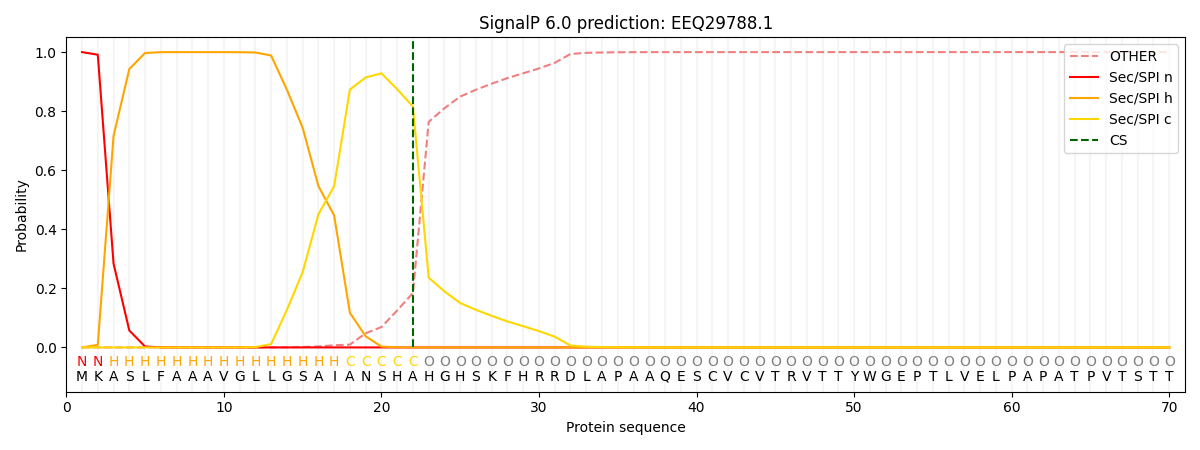You are browsing environment: FUNGIDB
CAZyme Information: EEQ29788.1
You are here: Home > Sequence: EEQ29788.1
Basic Information |
Genomic context |
Full Sequence |
Enzyme annotations |
CAZy signature domains |
CDD domains |
CAZyme hits |
PDB hits |
Swiss-Prot hits |
SignalP and Lipop annotations |
TMHMM annotations
Basic Information help
| Species | Microsporum canis | |||||||||||
|---|---|---|---|---|---|---|---|---|---|---|---|---|
| Lineage | Ascomycota; Eurotiomycetes; ; Arthrodermataceae; Microsporum; Microsporum canis | |||||||||||
| CAZyme ID | EEQ29788.1 | |||||||||||
| CAZy Family | GT8 | |||||||||||
| CAZyme Description | beta-glucosidase 5 | |||||||||||
| CAZyme Property |
|
|||||||||||
| Genome Property |
|
|||||||||||
| Gene Location | ||||||||||||
CDD Domains download full data without filtering help
| Cdd ID | Domain | E-Value | qStart | qEnd | sStart | sEnd | Domain Description |
|---|---|---|---|---|---|---|---|
| 227625 | Scw11 | 6.40e-54 | 200 | 451 | 47 | 301 | Exo-beta-1,3-glucanase, GH17 family [Carbohydrate transport and metabolism]. |
| 275319 | predic_Ig_block | 1.33e-07 | 142 | 189 | 73 | 119 | putative immunoglobulin-blocking virulence protein. Members of this family are putative virulence proteins of Mycoplasma and Ureaplasma species. Members share a region of sequence similarity (see TIGR04524) with protein M, a Mycoplasma genitalium protein that binds a conserved light chain region of IgG and blocks its protective function of antigen-specific binding. The seed alignment for this model includes an N-terminal signal-anchor domain and a proline-rich linker domain, and a C-terminal extension, in addition to the protein M-like domain recognized by TIGR04524. [Cellular processes, Pathogenesis] |
| 368653 | Trypan_PARP | 2.63e-07 | 136 | 185 | 63 | 111 | Procyclic acidic repetitive protein (PARP). This family consists of several Trypanosoma brucei procyclic acidic repetitive protein (PARP) like sequences. The procyclic acidic repetitive protein (parp) genes of Trypanosoma brucei encode a small family of abundant surface proteins whose expression is restricted to the procyclic form of the parasite. They are found at two unlinked loci, parpA and parpB; transcription of both loci is developmentally regulated. |
| 275319 | predic_Ig_block | 1.91e-06 | 135 | 189 | 72 | 124 | putative immunoglobulin-blocking virulence protein. Members of this family are putative virulence proteins of Mycoplasma and Ureaplasma species. Members share a region of sequence similarity (see TIGR04524) with protein M, a Mycoplasma genitalium protein that binds a conserved light chain region of IgG and blocks its protective function of antigen-specific binding. The seed alignment for this model includes an N-terminal signal-anchor domain and a proline-rich linker domain, and a C-terminal extension, in addition to the protein M-like domain recognized by TIGR04524. [Cellular processes, Pathogenesis] |
| 223021 | PHA03247 | 5.26e-06 | 30 | 200 | 2781 | 2951 | large tegument protein UL36; Provisional |
CAZyme Hits help
| Hit ID | E-Value | Query Start | Query End | Hit Start | Hit End |
|---|---|---|---|---|---|
| 2.85e-119 | 4 | 454 | 5 | 536 | |
| 6.57e-107 | 193 | 454 | 330 | 591 | |
| 1.06e-105 | 193 | 454 | 331 | 592 | |
| 3.06e-104 | 196 | 455 | 344 | 602 | |
| 3.06e-104 | 196 | 455 | 344 | 602 |
Swiss-Prot Hits download full data without filtering help
| Hit ID | E-Value | Query Start | Query End | Hit Start | Hit End | Description |
|---|---|---|---|---|---|---|
| 4.54e-110 | 200 | 454 | 310 | 564 | Probable beta-glucosidase btgE OS=Neosartorya fumigata (strain ATCC MYA-4609 / Af293 / CBS 101355 / FGSC A1100) OX=330879 GN=btgE PE=3 SV=2 |
|
| 4.54e-110 | 200 | 454 | 310 | 564 | Probable beta-glucosidase btgE OS=Neosartorya fumigata (strain CEA10 / CBS 144.89 / FGSC A1163) OX=451804 GN=btgE PE=3 SV=2 |
|
| 3.08e-107 | 191 | 454 | 290 | 551 | Probable beta-glucosidase btgE OS=Neosartorya fischeri (strain ATCC 1020 / DSM 3700 / CBS 544.65 / FGSC A1164 / JCM 1740 / NRRL 181 / WB 181) OX=331117 GN=btgE PE=3 SV=1 |
|
| 5.43e-105 | 196 | 455 | 344 | 602 | Probable beta-glucosidase btgE OS=Aspergillus flavus (strain ATCC 200026 / FGSC A1120 / IAM 13836 / NRRL 3357 / JCM 12722 / SRRC 167) OX=332952 GN=btgE PE=3 SV=1 |
|
| 5.43e-105 | 196 | 455 | 344 | 602 | Probable beta-glucosidase btgE OS=Aspergillus oryzae (strain ATCC 42149 / RIB 40) OX=510516 GN=btgE PE=3 SV=1 |
SignalP and Lipop Annotations help
This protein is predicted as SP

| Other | SP_Sec_SPI | CS Position |
|---|---|---|
| 0.000532 | 0.999425 | CS pos: 22-23. Pr: 0.8153 |
